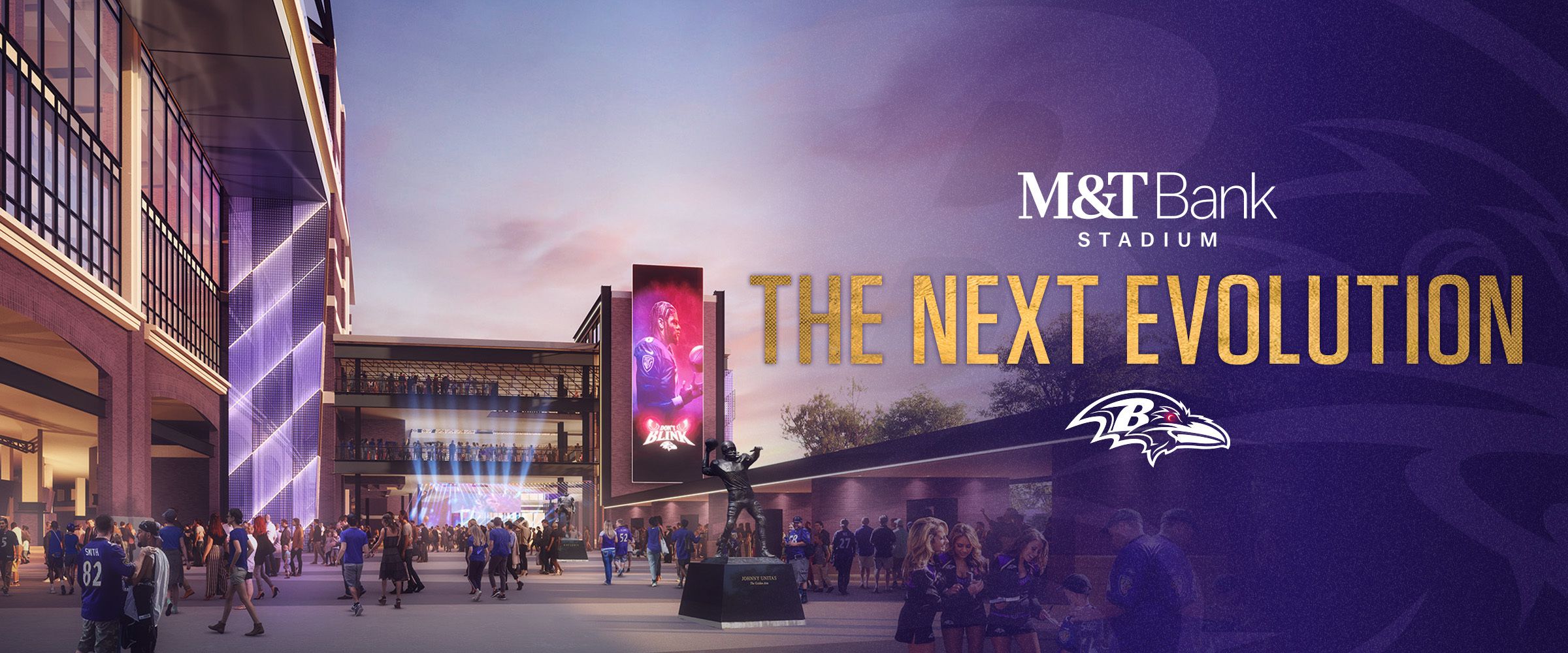The Argument Against Trading Up for a Wide Receiver
Last week, we looked at what it could take for the Ravens to move up in the draft for a first-round receiver. NBC Sports’ Andrew Gillis took the opposite approach and argued against it.
"While it's true that adding Jerry Jeudy or Ceedee Lamb or even a Justin Jefferson or Henry Ruggs-type wideout would only further elevate the offense, it's not the most sensical move for the roster," Gillis wrote.
Pundits have talked extensively about the depth of this year's receiver class, which is why Gillis doesn't believe it's worth giving up significant draft capital to move up. The Ravens have six picks between the second and fourth rounds alone.
"[W]ith a wide receiver class as loaded as this year's class is, there will certainly be a wide receiver of value, both on the field and in the draft room," Gillis wrote.
ESPN’s Todd McShay agrees. In his most recent mock draft, McShay didn't have the Ravens selecting a receiver until pick No. 60.
"Marquise ‘Hollywood’ Brown broke big plays for Baltimore last season, and Mark Andrews is a reliable target, but the Ravens could use another possession receiver for Lamar Jackson," McShay wrote. "Devin Duvernay caught 106 passes last season for Texas."
In a bit of a surprise, McShay has the Ravens taking TCU defensive tackle Ross Blacklock with the 28th-overall pick, and Fresno State guard Netane Muti at No. 55.
NFL.com’s Chad Reuter sees trading up as a possibility, but not for a receiver.
"Last year, the lone trade among the first 16 selections of the draft was Pittsburgh's move to secure the services of linebacker Devin Bush, " Reuter wrote. "Perhaps the division-rival Ravens will make a similar move to land a new leader for the middle of the defense in former Oklahoma linebacker Kenneth Murray. … They'll have to give up the 28th-pick, a 2021 second-round selection and a middle-rounder this year to get Murray, but they might be able to land [Patrick] Queen by trading with Jacksonville at 20, Philadelphia at 21 or Minnesota at 22 for a lower price."
Gillis pointed to the Ravens' investments in weapons around Jackson as another reason to wait until the second round or later for a receiver. They return one of the league's top young tight ends in Andrews and Brown is poised for a strong sophomore season.
"When you look at the investments the Ravens have made on offense in recent years, paired with the context of this year's draft and other team needs across the board, it simply doesn't make sense to invest even more top resources into more skill positions on the offense," Gillis added.
Tackle Market Indicates Ronnie Stanley Will Get Paid
Entering the final year of his rookie contract, keeping left tackle Ronnie Stanley long-term is on the Ravens' priority list. General Manager Eric DeCosta told reporters at the NFL Scouting Combine that the team had talks with Stanley's camp about an extension.
Stanley is coming off his best season as a first-team All-Pro. Players of that caliber don't come cheap, and if the tackle market is any indication of Stanley's next contract, he's going to get paid a lot of money.
"There would be a lot of zeros, I can promise you that," The Athletic's Jeff Zrebiec wrote. "Lane Johnson is the highest-paid [offensive lineman] in the league at $18 million per year. Stanley is younger than him and he's also played exclusively [left tackle] his whole career, the position that's traditionally been most valued. So I would think you're looking at paying Stanley in the $19 to $20 million per year range if you want to get that done."
Overthecap.com projects Stanley to receive a six-year, $107 million contract averaging at $17.6 million a year, but he might not be in a rush for a new deal this offseason.
According to the Houston Chronicle's Aaron Wilson, Laremy Tunsil, who was taken seven picks after Stanley, is seeking more than $18.5 million a year.
That would reset the market and make Tunsil the NFL's highest-paid offensive lineman. It's not hard to see Stanley following behind.
"Stanley should be in no rush to get a deal done before Tunsil resets the market," Ravens Wire’s Matthew Stevens wrote. "... [W]ith a league that is continuing to see offenses pass the football more, left tackle might just be the second most important position behind quarterback."
You can make the argument that Stanley is the most deserving of the young offensive linemen. He was Pro Football Focus' best pass-blocking tackle last season and protected the reigning MVP. That surely carries some weight in contract negotiations.
Extending Stanley would secure his future in Baltimore and open up between $3-5 million in cap space this offseason, according to Russell Street Report's Brian McFarland.
Campbell: Excited to Play for a 'Young and Talented' Team
At this point his career, Calais Campbell has made it clear he wants to win. That's why it didn't take much convincing for the 33-year-old defensive end to buy into the Ravens' plans.
After all, Baltimore finished with an NFL-best 14-2 record last season with one of the league's most dynamic quarterbacks under center.
Campbell told NFL Network's Ian Rapoport on the “Rapsheet and Friends” podcast that he's excited to play with a young core.
"Baltimore is a great opportunity for me," Campbell said. "On the football field it's very obvious … young and talented, full of potential. I know I bring some good things in that can add some value … and hopefully we can go out there and hoist that Lombardi trophy a year from now."
Campbell has been to the playoffs a handful of times in his career but is still chasing that elusive Super Bowl. Financials are important to every player, but Campbell didn't mind accepting less money to play with a contending team.
"Obviously, this is a business and you got to think about the financial reward that comes from the value I bring, but, at the same time, I made a lot of money in this league and I only got so many prime years left," Campbell said. "I want to really capitalize on this one and I feel like Baltimore was a great choice. And they still paid me pretty good so it's not too bad."
Why This Could Be One of the Best Undrafted Classes Ever
While the NFL reportedly sent a memo to teams that the draft will go forward as scheduled from April 23-25, the effects of COVID-19 have changed how things operate.
One important issue facing front offices and scouts are medicals. Because of travel restrictions, teams can't bring in prospects for visits, which makes things tricky all around.
"This appears to be the biggest issue looming over everyone—and it's especially big on players who either weren't invited to the combine or are coming back from an injury," Sports Illustrated’s Albert Breer wrote. "The annual combine recheck is usually a way to get updates. Without that, or 30 visits to tie up loose ends, teams are going to have to rely on information coming from the players, agents and others with a vested interest."
That's why Bleacher Report's Connor Rodgers thinks this could be a historically great undrafted class.
"I think it will go down as the greatest UDFA that we've possibly ever seen in the last 25 years or so since the draft process has been the way it is," Rodgers said on the 'Lefkoe Show' podcast. "Because simply, guys are going to miss. And also a big one is, guys are going to go undrafted simply because they did not have the medical checks or re-checks that they deserved to have."
Given the Ravens' track record with undrafted players, it could play to their advantage.
Last season, Patrick Mekari started five games at center as an undrafted rookie. Other players such as Gus Edwards, Matt Skura, Pat Ricard, Michael Pierce and Justin Tucker have made significant impacts as former undrafted free agents.
Quick Hits



















